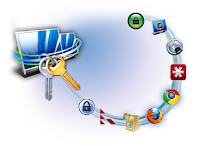Weekly Infosec News Brief: 5-11 June 2017
OneLogin Breach -- Attackers May Be Able to Decrypt Data
A consistent recommendation of most security professionals has been for users and organizations to adopt single sign-on and secure password management programs. These programs, many of them cloud-based, reduce the need for users to remember a host of different passwords, thus making it easier for them to choose strong, unique passwords. While this is generally good advice, it is crucial to choose a provider with a strong security track record of their own. OneLogin, a single sign-on provider popular with corporate users, was compromised two weeks ago, and revealed last week that the attackers also obtained keys that may allow them to decrypt the stolen data. In the past, major breaches of password managers (such as LastPass) have apparently led to no true data loss, because the stolen data was strongly encrypted, and the keys were securely stored separately from the data. OneLogin users are advised to update their master passwords and all other passwords protected by their OneLogin account.
https://www.scmagazine.com/onelogin-hacker-swiped-aws-keys-can-decrypt-stolen-data/article/666112/https://www.onelogin.com/blog/may-31-2017-security-incident
The ETERNALBLUE Vulnerability Exploited by WannaCry is Being Used by Other Malware as Well
The exploit that enabled the rapid spread of the headline-grabbing WannaCry ransomware last month was the ETERNALBLUE exploit discovered by, and later stolen from, the US National Security Agency. It was this powerful exploit that made that malware so dangerous, and that same exploit is now being used by other malware to install in systems. The exploit works against the Microsoft Server Message Block (SMB) file-sharing service, which is commonly used for sharing file and folder access in Windows-based networks. Two steps are recommended to avoid this issue:- Ensure that the MS017-010 update is installed on all of your MS Windows systems.
- Ensure that the SMB service is not exposed outside your organizational firewall or otherwise accessible via the Internet. This service typically runs on TCP port 445, but can also use TCP port 139 (and UPD 137-138).
https://www.scmagazine.com/eternalblue-used-in-wannacry-now-with-nitol-backdoor-and-gh0st-rat/article/666426/
Mouse-hovering Malware-delivery Links in Malicious PowerPoint Document Represent a Game-changer
One thing that users are often told about avoiding phishing attacks is to hover over links to see where they go. A recently-spotted malware campaign turned this advice on its head by creating links in a malicious PowerPoint document that run a PowerShell script when the user simply hovers over them, downloading a malware payload. It remains to be seen whether this method will become widely adopted or if Microsoft will issue an update to prevent this kind of behavior in scripts embedded in MS Office files.
Federal Task Force on Improving Infosec in Healthcare Releases Report
A federally-convened task force working for nearly two years to address the problems of information security in the healthcare industry has released its conclusions. Among the key recommendations:- Healthcare providers should have greater leeway to share information and resources in order to enable smaller providers to develop adequate cybersecurity programs
- Healthcare providers should obtain assessments aligned to the NIST Cybersecurity Framework
- NIST should issue a new guideline specific to the healthcare industry
http://thehill.com/policy/cybersecurity/336394-federal-healthcare-cybersecurity-task-force-releases-report
https://www.phe.gov/Preparedness/planning/CyberTF/Documents/report2017.pdf




Comments
Post a Comment